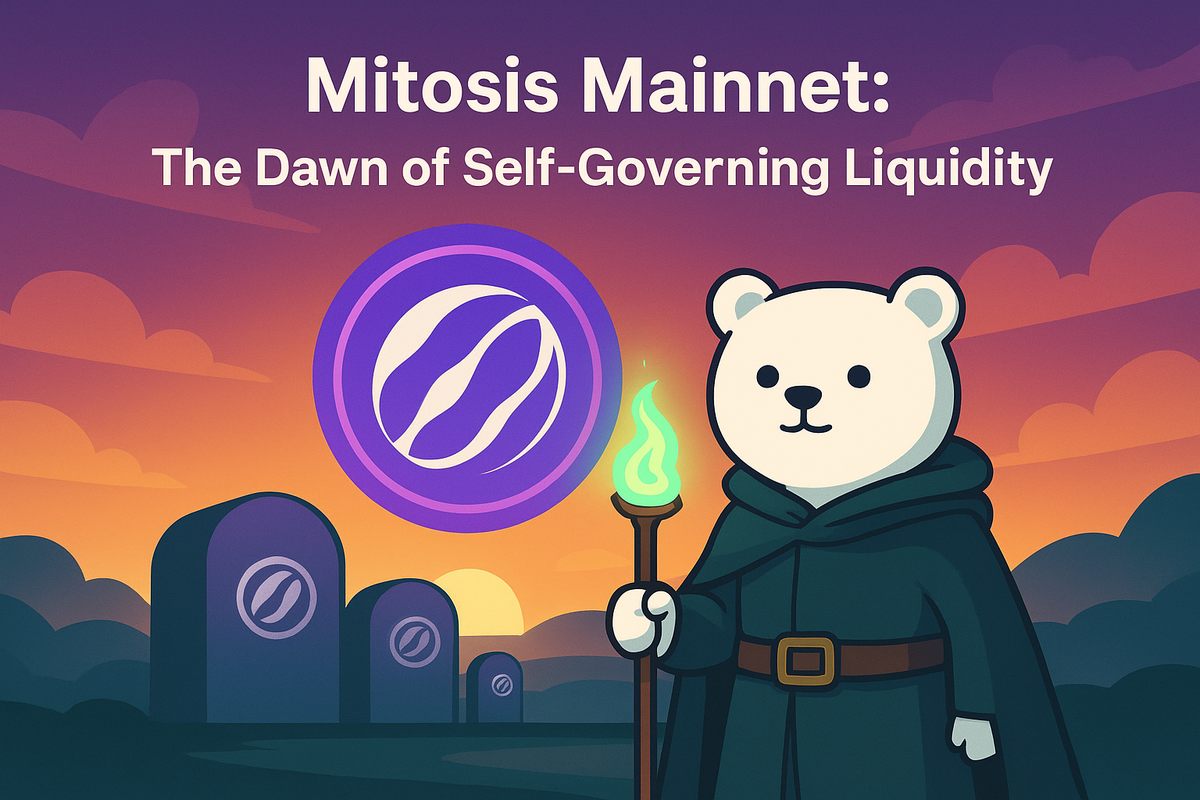Mitosis Mainnet: The Dawn of Self-Governing Liquidity

Introduction: DeFi’s Liquidity Problem
Liquidity is the backbone of DeFi it fuels lending, trading, and yield generation. But today’s liquidity is fragile. It’s scattered across chains, constantly shifting between protocols, and often driven by short-term incentives that vanish overnight.
The result?
- Users chase APRs like moving targets.
- Protocols struggle with “mercenary capital” that leaves as soon as incentives dry up.
- Liquidity becomes siloed, inefficient, and unsustainable.
DeFi promised automation and efficiency, yet liquidity still behaves like a manual system, one where users bear the stress of rebalancing, bridging, and monitoring yields.
The launch of Mitosis Mainnet changes this by introducing something entirely new: self-governing liquidity.
The Shift: From User-Managed to Self-Governing Liquidity
At its core, Mitosis introduces a new paradigm, liquidity that doesn’t just sit, but governs itself.
This is achieved through three foundational pillars:
- Vault Liquidity Framework (VLF): turns deposits into programmable liquidity that reallocates across strategies automatically.
- Ecosystem-Owned Liquidity (EOL): ensures capital is not mercenary, but governed by the community, aligned with the protocol’s long-term health.
- Cross-Chain Connectivity (via Hyperlane): enables liquidity to move where it’s needed, across chains, without bridges or manual user intervention.
Together, these pillars create a liquidity system that is dynamic, autonomous, and sustainable.
How It Works in Practice
- Deposit Once, Earn Always
Users no longer need to bridge, stake, or chase yields. Depositing into a Mitosis vault plugs liquidity into a system that constantly rebalances. - Cross-Chain Yield Execution
When yields on one chain fall and new opportunities arise elsewhere, Mitosis uses Hyperlane’s interchain messaging to redirect liquidity without exposing users to bridge risks. - Ecosystem Alignment
With EOL, liquidity isn’t just rented, it’s owned and governed by the ecosystem itself. Rewards and incentives cycle back to strengthen the protocol, not just mercenary capital. - Transparent Settlement Layer
All activity is settled on the Mitosis Chain, creating a single source of truth for liquidity flows, governance, and strategy execution.
Why This Matters Post-Mainnet
The launch of the Mitosis Mainnet isn’t just another protocol going live, it’s the activation of an autonomous liquidity engine.
- For users: No more APR anxiety. No more bridges. Just seamless, automated yield.
- For protocols: Reliable, sticky liquidity that strengthens ecosystems instead of draining them.
- For DeFi as a whole: A step toward true interoperability, where capital isn’t siloed but shared, composed, and optimized across chains.
This is the dawn of programmable liquidity at scale.
Conclusion: A New Era for Liquidity
Mitosis Mainnet signals the end of manual DeFi. No more chasing yields across chains. No more mercenary liquidity draining ecosystems.
Instead, liquidity now thinks, adapts, and governs itself, aligning users, protocols, and ecosystems in one self-sustaining loop.
If liquidity is the lifeblood of DeFi, Mitosis is the brain and heart working together:
- The brain: intelligently routing and optimizing yield.
- The heart: ensuring capital flows strengthen the ecosystem as a whole.
The result? DeFi that’s not just faster or cheaper, but smarter.
Mitosis Mainnet is here. The age of self-governing liquidity has begun.
Comments ()